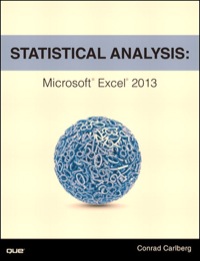Question
Fleet Street Inc., a manufacturer of high-fashion clothing for women, is located in South London in the UK. Its product line consists of trousers (30%),
Fleet Street Inc., a manufacturer of high-fashion clothing for women, is located in South London in the UK. Its product line consists of trousers (30%), skirts (29%), dresses (14%), and other (27%). Fleet Street has been using a volume-based rate to assign overhead to each product; the rate it uses is 2.37 per unit produced. The results for the trousers line, using the volume-based approach, are as follows:
| Number of units produced | 15,000 | ||
| Price (all figures in ) | 27.02 | ||
| Total revenue | 405,300 | ||
| Direct materials | 66,700 | ||
| Direct labor | 222,600 | ||
| Overhead (volume-based) | 35,550 | ||
| Total product cost | 324,850 | ||
| Nonmanufacturing expenses | 60,600 | ||
| Total cost | 385,450 | ||
| Profit margin for trousers | 19,850 | ||
Recently, Fleet Street conducted a further analysis of the trousers line of product, using ABC. In the study, eight activities were identified, and direct labor was assigned to the activities. The total conversion cost (labor and overhead) for the eight activities, after allocation to the trousers line, is as follows:
| Pattern cutting | 39,100 | ||
| Grading | 33,700 | ||
| Lay planning | 32,800 | ||
| Sewing | 37,400 | ||
| Finishing | 25,200 | ||
| Inspection | 11,100 | ||
| Boxing up | 6,000 | ||
| Storage | 12,000 | ||
Required:
Determine the profit margin for trousers using ABC.
-----------------------------------------------------------------------------
Garner Industries manufactures precision tools. The firm uses an activity-based costing system. CEO Deb Garner is very proud of the accuracy of the system in determining product costs. She noticed that since the installment of the ABC system 10 years earlier, the firm had become much more competitive in all aspects of the business and earned an increasing amount of profits every year.
In the last two years, the firm sold 0.523 million units to 4,700 customers each year. The manufacturing cost is $300 per unit. In addition, Garner has determined that the order-filling cost is $48.76 per unit. The $476.00 selling price per unit includes 19% markup to cover administrative costs and profits.
The order-filling cost per unit is determined based on the firms costs for order-filling activities. Order-filling capacity can be added in blocks of 60 orders. Each block costs $60,000. In addition, the firm incurs $1,500 order-filling costs per order.
Garner serves two types of customers designated as PC (Preferred Customer) and SC (Small Customer). Each of the 100 PCs buys, on average, 4,000 units in two orders. The firm also sells 123,000 units to 1,000 SCs. On average each SC buys 123 units in 10 orders. Ed Cheap, a buyer for one PC, complains about the high price he is paying. Cheap claims that he has been offered a price of $400 per unit and threatens to take his business elsewhere. Garner does not give in because the $400 price Cheap demands is below cost. Besides, she has recently raised the price to SC to $503.25 per unit and experienced no decline in orders.
Required:
1. Demonstrate how Garner arrives at the $48.76 order-filling cost per unit.
2. What would be the amount of loss (profit) per unit if Garner sells to Cheap at $400 per unit?
3. What is the amount of loss (profit) per unit at the $503.25 selling price per unit for units sold to SC?
Step by Step Solution
There are 3 Steps involved in it
Step: 1

Get Instant Access to Expert-Tailored Solutions
See step-by-step solutions with expert insights and AI powered tools for academic success
Step: 2

Step: 3

Ace Your Homework with AI
Get the answers you need in no time with our AI-driven, step-by-step assistance
Get Started


